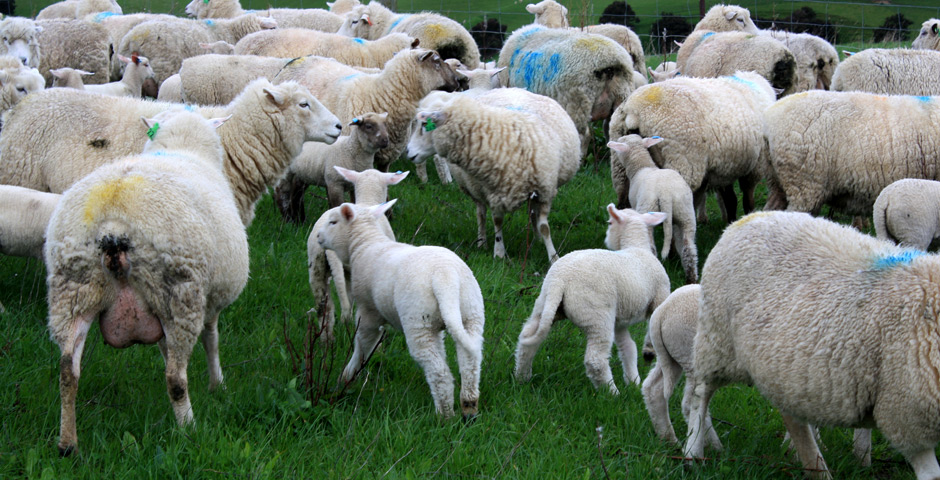Lambs sired from Charollais rams have a distinctive wedge shaped body, allowing for easy lambing. This makes the Charollais terminal sire suitable for hogget lambing or mating small breeds such as Merinos.
Charollais has the world’s highest meat to bone ratio, with Charollais sired lambs capable of growing to heavier weights, and providing yield premiums from lambs killed in any weight range.

Charollais: the world’s highest meat to bone ratio sheep breed
The Charollais is proving itself to be a most suitable sire for carcasses over 20kgs. Charollais produces a long carcass with an extra rib, and the higher intra muscular fat and lower subcutaneous fat makes the meat cuts very attractive to butchers, chefs and consumers due to the relationship with tenderness.
The development of the Asian market for the New Zealand Lamb industry is very different to that of Europe which requires joints for roasting from carcasses under 19kgs. The Asian market just needs lean meat off the bone. As New Zealand follows the Australian industry in requiring heavier carcasses to service this market, higher meat yields and dressing out percentages become paramount for attaining premium prices.
- Charollais sheep have a Myostatin muscling gene variant which is additive to MyoMAX which some also have naturally.
- Long carcass with an extra rib.
- High dressing out % and high meat yield %.
- Capable of grading to carcass weights exceeding 25kgs.
- Very fast growth rate on pasture
- Charollais also produce a short staple fleece of down-type wool. They are very clean on the points often with a bare breech, making them less susceptible to fly strike.
Charollais Sheep NZ research results
Charollais Sheep NZ has undertaken scrupulous research and testing to identify and develop the ultimate terminal sire for the New Zealand lamb industry.
Of the 2010 born first cross lambs in Otago;
- Singles grew between 410-540 grams per day to weaning.
- Twins grew between 360-480 grams per day to weaning.
- All lambs averaged 340 grams per day over their first 150 days.
Ultra sound scanning results were analysed by Dr. Peter Fennessy of AbacusBio Ltd in Dunedin. His analysis compared Charollais cross rams to all the other rams produced at Douglas Downs including Poll Dorsets and their crosses with Texel, Suffolk, Ile de France, South Down, and Dorset Horns. Charollais cross lambs had 4.8% larger eye muscles when corrected by live weight. Much of this effect was eye muscle width being the widest of all breeds and crosses.
Four Charollais cross ram lambs were CT scanned at Invermay. They averaged a gradable carcass weight equivalent of 32.0 kilos and a lean meat % of 57.4, the best ram lamb was 59.3% lean at 30.3 kilo carcass. These CT scan results have enhanced the Charollais sire’s SIL Terminal Sire Index rankings.
2011 results for Charollais Sheep NZ
- Survival of Charollais cross lambs same as Poll Dorset x Texels at 1000 ft asl. In Otago hill country during poor weather in early September.•All Charollais sires ranked above average for Survival Breeding Value from 36 sires of several breeds used in the Douglas Downs Poll Dorset flock since 2007.
- Charollais sired lambs out of Romney hoggets had 5% assisted, 41% drafted at 102 days averaging 16.88 kg carcasses, 84% qualified above the Viascan yield threshold yielding 56.3% lean.
- Charollais sired lambs out of Romney cross hoggets had 4% assisted, half of the lambs were drafted at 131 days of age averaging 19.1 kgs, 96% qualified on Viascan yield at 56.77% lean.
- Over half of both sexes of recorded Charollais sired lambs had Eye Muscle Area measurements over 20 square centimetres at 150 days of age.
- Charollais cross lambs averaged over 450 g/d to weaning at 102 days reared at 164% on permanent pasture only. Singles exceeded 600 g/d.
